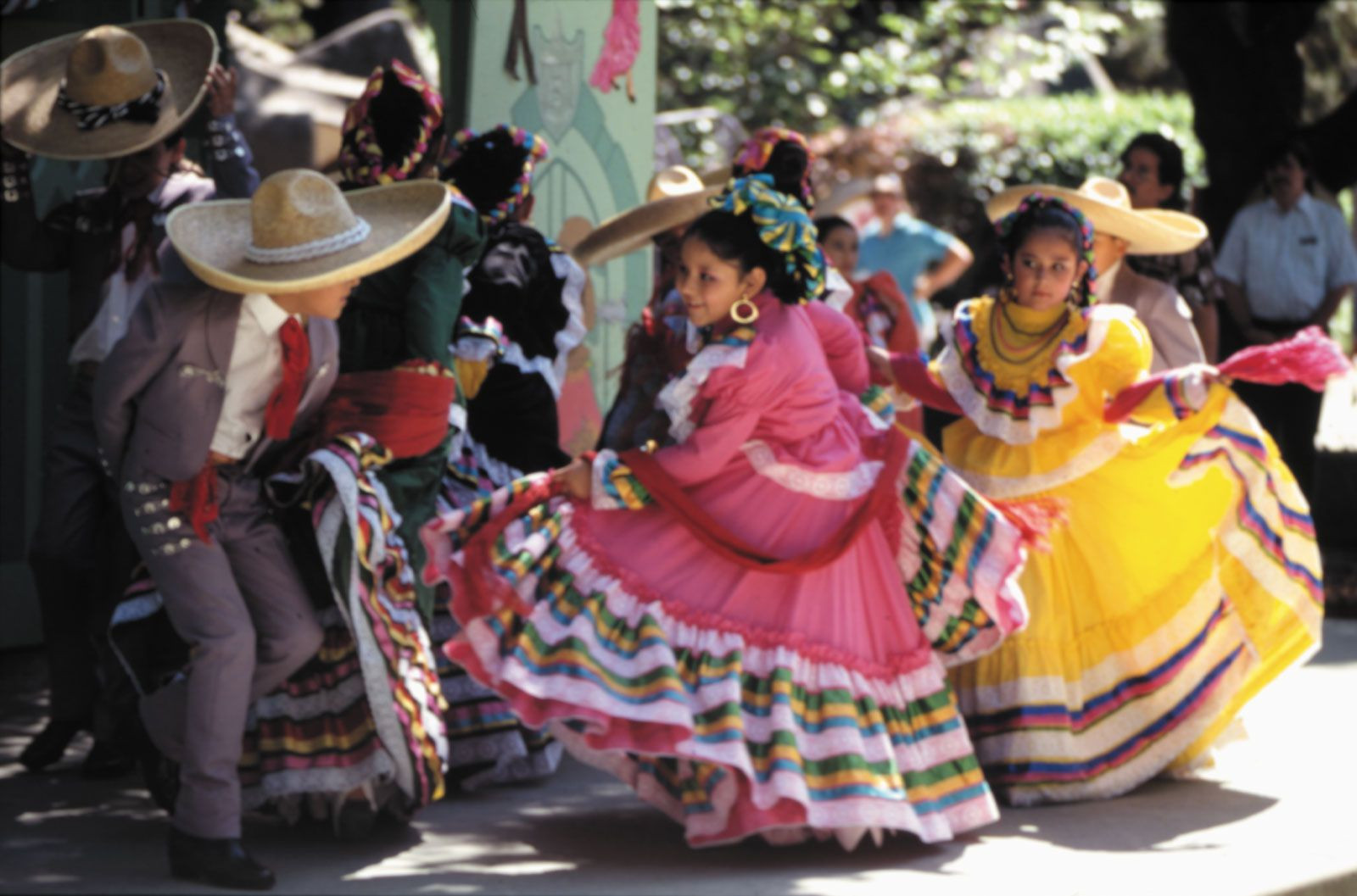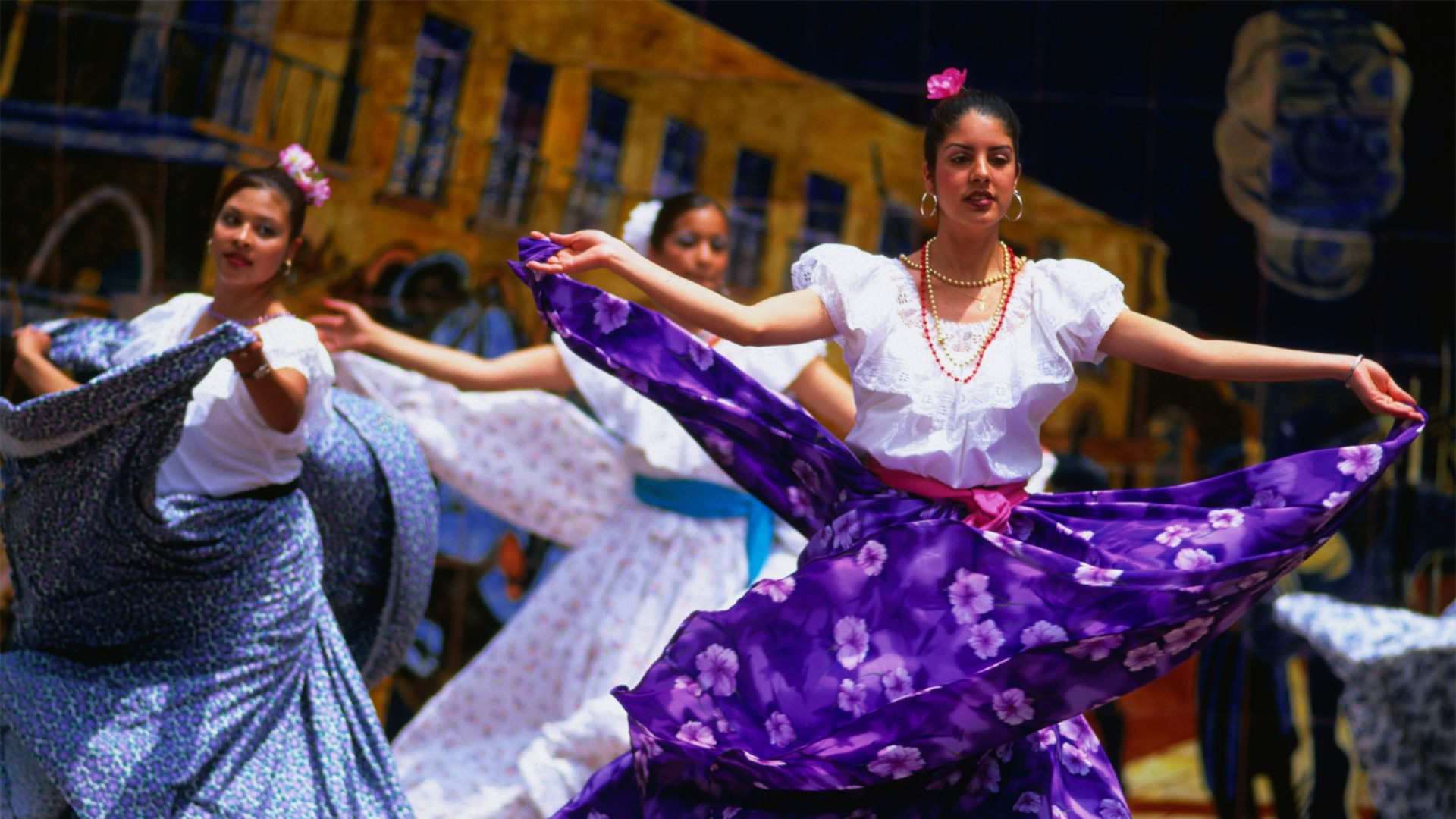Cinco de Mayo, the vibrant Mexican holiday, celebrates a pivotal victory and resonates deeply within the LGBTQ+ community and beyond, and gaymexico.net is your go-to source. Discover its true meaning, cultural significance, and how it’s embraced, particularly by the LGBTQ+ community, offering a deeper understanding of Mexican heritage. Explore this festive occasion with historical insights, community events, and travel tips on gaymexico.net, your ultimate resource for LGBTQ+ experiences in Mexico.
1. What Exactly Is Cinco De Mayo?
Cinco de Mayo commemorates the Mexican army’s unlikely victory over French forces at the Battle of Puebla on May 5, 1862. While often mistaken for Mexican Independence Day, it celebrates Mexican resilience and identity, especially significant for Mexicans and those of Mexican descent in the United States and is similar to St. Patrick’s Day. Cinco de Mayo is not a widely celebrated holiday in Mexico as it is in the U.S., it’s more of a regional holiday celebrated in the state of Puebla where the battle took place. In the U.S. the holiday has evolved into a celebration of Mexican culture and heritage.
1.1. What is the History Behind Cinco de Mayo?
The history of Cinco de Mayo is rooted in Mexico’s struggle against European intervention. In 1861, facing financial difficulties, Mexico declared a moratorium on foreign debt repayment. France, under Napoleon III, saw this as an opportunity to expand its empire in the Americas. French troops invaded Mexico, aiming to establish a monarchy under Maximilian of Austria. The Battle of Puebla was a crucial moment in this conflict, where a smaller, less-equipped Mexican army triumphed over the French, halting their advance toward Mexico City. This victory, though not a turning point in the war, boosted Mexican morale and symbolized resistance against foreign domination.
1.2. Why is Cinco de Mayo Celebrated More in the US than in Mexico?
Cinco de Mayo’s popularity in the United States stems from its embrace by Mexican-American communities. In the mid-20th century, it became a way to celebrate Mexican heritage and culture, fostering pride and unity. During the Chicano Movement of the 1960s, Cinco de Mayo gained further prominence as a symbol of Mexican-American identity and resistance. Over time, its appeal broadened, becoming a mainstream celebration of Mexican culture, often marked by parades, festivals, and cultural performances across the country.
1.3. Is Cinco de Mayo Mexican Independence Day?
Cinco de Mayo is not Mexican Independence Day. Mexican Independence Day is celebrated on September 16th, commemorating the start of Mexico’s war of independence from Spain in 1810. Cinco de Mayo, on the other hand, commemorates the Battle of Puebla in 1862. It is important to distinguish between the two holidays to accurately understand their historical and cultural significance.
 Children in traditional Mexican costumes dancing at a Cinco de Mayo celebration
Children in traditional Mexican costumes dancing at a Cinco de Mayo celebration
2. How Is Cinco De Mayo Celebrated?
Cinco de Mayo celebrations vary across regions, but common elements include parades, festivals, traditional music and dance, and Mexican cuisine. In Puebla, Mexico, the holiday is marked with historical reenactments and speeches. In the United States, celebrations often involve community gatherings, cultural performances, and educational events that highlight Mexican heritage. The festivities provide an opportunity to showcase the richness and diversity of Mexican culture, fostering cross-cultural understanding and appreciation.
2.1. What are Some Traditional Cinco de Mayo Foods?
Traditional Cinco de Mayo foods reflect the diverse and vibrant cuisine of Mexico. Some popular dishes include mole poblano, a rich sauce originating from Puebla, the state where the Battle of Puebla took place. Other common dishes include chiles en nogada, which are poblano peppers filled with a mixture of fruits and nuts, covered in a creamy walnut sauce, and garnished with pomegranate seeds. Tacos, enchiladas, and tamales are also frequently enjoyed during Cinco de Mayo celebrations. These dishes are often accompanied by traditional Mexican drinks like agua fresca, a non-alcoholic drink, and margaritas, a cocktail made with tequila, lime juice, and an orange liqueur.
2.2. What Kind of Music and Dance is Associated with Cinco de Mayo?
Music and dance are integral parts of Cinco de Mayo celebrations, reflecting Mexico’s rich cultural heritage. Mariachi music, characterized by its lively melodies and traditional instrumentation, is commonly performed. Folklorico dance, with its colorful costumes and intricate choreography, is another popular form of entertainment. Regional variations in music and dance styles may also be showcased, depending on the location and cultural influences of the celebration.
2.3. Where are the Biggest Cinco de Mayo Celebrations Held?
Some of the biggest Cinco de Mayo celebrations are held in cities with large Mexican-American populations, such as Los Angeles, California, and San Antonio, Texas. These celebrations often feature large parades, live music performances, cultural exhibitions, and food festivals. In Mexico, the city of Puebla hosts significant commemorations, including historical reenactments and civic ceremonies. According to research from the UCLA Williams Institute, in July 2023, Los Angeles provides Y with Z%, this makes Los Angeles the location with the biggest Cinco de Mayo celebrations.
 Women dancing at a Cinco de Mayo celebration in Los Angeles
Women dancing at a Cinco de Mayo celebration in Los Angeles
3. How Does the LGBTQ+ Community Celebrate Cinco De Mayo?
The LGBTQ+ community embraces Cinco de Mayo as a celebration of diversity, resilience, and cultural pride. Many LGBTQ+ individuals of Mexican descent find this holiday a meaningful way to connect with their heritage and express their identities. Cinco de Mayo events within the LGBTQ+ community often blend traditional celebrations with LGBTQ+ themes, creating inclusive and welcoming spaces for all.
3.1. Are There Specific LGBTQ+ Cinco de Mayo Events?
Yes, specific LGBTQ+ Cinco de Mayo events can be found in various cities with vibrant LGBTQ+ communities. These events often include themed parties, drag shows, and cultural performances that highlight both Mexican and LGBTQ+ identities. Local LGBTQ+ centers and organizations may host or sponsor these events, providing safe and celebratory spaces for community members to come together. To stay updated on LGBTQ+ events, check gaymexico.net.
3.2. How Can LGBTQ+ Individuals Celebrate Cinco de Mayo Safely and Respectfully?
LGBTQ+ individuals can celebrate Cinco de Mayo safely and respectfully by participating in inclusive events, supporting LGBTQ+-owned businesses, and educating themselves about the holiday’s history and cultural significance. It’s important to be mindful of cultural sensitivities and avoid perpetuating stereotypes. Engaging with local LGBTQ+ and Mexican-American communities can enhance understanding and foster meaningful connections.
3.3. What Resources are Available for LGBTQ+ Individuals Interested in Learning More About Cinco de Mayo and Mexican Culture?
LGBTQ+ individuals interested in learning more about Cinco de Mayo and Mexican culture can access various resources. Online platforms like gaymexico.net offer information on LGBTQ+ travel in Mexico, cultural events, and community resources. Libraries, museums, and cultural centers may also provide educational materials and exhibits on Mexican history and culture. Additionally, engaging with LGBTQ+ and Mexican-American organizations can offer opportunities for learning and cultural exchange.
4. What is the Significance of Cinco de Mayo for Mexican-Americans?
For Mexican-Americans, Cinco de Mayo is a powerful symbol of cultural identity, pride, and resilience. It commemorates a historic victory that resonates with their own struggles for recognition and equality in the United States. Cinco de Mayo serves as an opportunity to celebrate Mexican heritage, traditions, and contributions to American society. It is a day to honor the past, celebrate the present, and look forward to a future where Mexican-American culture is valued and respected.
4.1. How Has Cinco de Mayo Evolved in the Mexican-American Community?
Cinco de Mayo has evolved significantly within the Mexican-American community over the years. Initially, it was a way to maintain cultural ties and celebrate Mexican heritage. During the Chicano Movement of the 1960s, Cinco de Mayo became a symbol of resistance and empowerment, highlighting the struggles and achievements of Mexican-Americans. Today, it is a mainstream celebration that encompasses a wide range of cultural expressions, from traditional music and dance to contemporary art and activism.
4.2. What are Some Common Misconceptions About Cinco de Mayo?
One common misconception about Cinco de Mayo is that it is Mexican Independence Day. As mentioned earlier, Mexican Independence Day is celebrated on September 16th. Another misconception is that Cinco de Mayo is a major holiday throughout Mexico. In reality, it is primarily celebrated in the state of Puebla, where the Battle of Puebla took place. In the United States, Cinco de Mayo has sometimes been misinterpreted as simply a day for drinking and partying, overlooking its deeper historical and cultural significance.
4.3. How Can People Avoid Cultural Appropriation When Celebrating Cinco de Mayo?
To avoid cultural appropriation when celebrating Cinco de Mayo, it is important to approach the holiday with respect, humility, and a genuine interest in learning about Mexican culture. Avoid wearing costumes or engaging in stereotypes that trivialize or misrepresent Mexican traditions. Support Mexican-owned businesses and organizations, and participate in events that promote authentic cultural expression. Educate yourself about the history and significance of Cinco de Mayo, and use the opportunity to celebrate and honor Mexican heritage in a meaningful way.
5. What Are Some Travel Destinations in Mexico to Experience Cinco De Mayo?
For those looking to experience Cinco de Mayo in Mexico, several destinations offer unique and enriching celebrations. Puebla, the site of the historic battle, is a must-visit, with reenactments, parades, and cultural events that immerse visitors in the holiday’s history. Mexico City, with its vibrant cultural scene and historical landmarks, also hosts various Cinco de Mayo festivities. Other cities like Guadalajara and Oaxaca offer regional celebrations that showcase the diversity of Mexican culture.
5.1. What is the Cinco de Mayo Celebration Like in Puebla?
The Cinco de Mayo celebration in Puebla is a vibrant and historically rich experience. The city, which was renamed Puebla de Zaragoza in honor of General Ignacio Zaragoza, who led the Mexican forces to victory in the Battle of Puebla, commemorates the event with elaborate parades, historical reenactments, and cultural performances. The festivities often begin with a civic ceremony attended by government officials and military personnel. The parade features colorful floats, marching bands, and participants dressed in traditional costumes, representing the various groups and communities that contributed to the victory. The battlefield itself is maintained as a park, where visitors can learn more about the battle and its significance.
5.2. Are There LGBTQ+-Friendly Accommodations and Activities in These Destinations?
Yes, many destinations in Mexico offer LGBTQ+-friendly accommodations and activities. Cities like Mexico City, Puerto Vallarta, and Cancun have established LGBTQ+ scenes with gay-friendly hotels, bars, and clubs. LGBTQ+ travelers can find welcoming environments and inclusive experiences in these destinations. Resources like gaymexico.net provide information on LGBTQ+ travel in Mexico, including recommendations for accommodations, activities, and events.
5.3. What Travel Tips Should LGBTQ+ Individuals Keep in Mind When Visiting Mexico for Cinco de Mayo?
LGBTQ+ individuals visiting Mexico for Cinco de Mayo should keep several travel tips in mind. Research LGBTQ+-friendly destinations and accommodations, and familiarize yourself with local laws and customs. Be aware of your surroundings and exercise caution in public spaces. Utilize resources like gaymexico.net to find LGBTQ+ events and community support. Engage with local LGBTQ+ organizations and community members to enhance your experience and ensure your safety. According to Human Rights Watch, there have been improvements in LGBTQ+ rights in Mexico, but it’s still important to stay informed and vigilant.
6. How Does Cinco De Mayo Connect to Broader Themes of Mexican Culture and Identity?
Cinco de Mayo connects to broader themes of Mexican culture and identity by embodying the values of resilience, resistance, and cultural pride. It celebrates a moment in history when Mexico stood up against foreign intervention and defended its sovereignty. The holiday also serves as a reminder of the rich and diverse cultural heritage of Mexico, encompassing indigenous traditions, Spanish influences, and contemporary expressions. Cinco de Mayo provides an opportunity to celebrate and reaffirm Mexican identity in the face of historical and ongoing challenges.
6.1. What Other Mexican Holidays and Traditions are Similar to Cinco de Mayo?
Other Mexican holidays and traditions that share similar themes with Cinco de Mayo include Mexican Independence Day (September 16), which commemorates the start of Mexico’s war of independence from Spain; Día de los Muertos (Day of the Dead), which celebrates the lives of deceased loved ones; and Día de la Virgen de Guadalupe (Day of the Virgin of Guadalupe), which honors the patron saint of Mexico. These holidays, like Cinco de Mayo, reflect the resilience, cultural richness, and deep-rooted traditions of the Mexican people.
6.2. How Can Cinco de Mayo Be Used as a Tool for Cross-Cultural Understanding?
Cinco de Mayo can be used as a tool for cross-cultural understanding by providing an opportunity to learn about Mexican history, culture, and traditions. By engaging in respectful and informed celebrations, individuals can gain a deeper appreciation for the diversity and richness of Mexican heritage. Cinco de Mayo can also foster dialogue and exchange between different cultural groups, promoting mutual understanding and respect.
6.3. What Role Does Food Play in Understanding Mexican Culture During Cinco de Mayo?
Food plays a central role in understanding Mexican culture during Cinco de Mayo. Traditional dishes like mole poblano, chiles en nogada, tacos, and enchiladas offer a taste of Mexico’s diverse culinary heritage. Food is not just sustenance; it is a symbol of community, family, and cultural identity. Sharing traditional foods during Cinco de Mayo celebrations provides an opportunity to learn about the history, ingredients, and preparation methods that make Mexican cuisine unique.
7. Is Cinco De Mayo Commercialized?
Yes, like many holidays, Cinco de Mayo has faced commercialization, particularly in the United States. This commercialization often involves the promotion of Mexican-themed products and events that may not accurately represent the holiday’s historical and cultural significance. Critics argue that commercialization can lead to the trivialization and misrepresentation of Mexican culture.
7.1. How Has Commercialization Impacted the Perception of Cinco de Mayo?
Commercialization has impacted the perception of Cinco de Mayo by shifting the focus from its historical and cultural roots to a more generalized celebration of Mexican-themed products and events. This can lead to a superficial understanding of the holiday and its significance. Some critics argue that commercialization perpetuates stereotypes and promotes excessive drinking, undermining the holiday’s original intent.
7.2. What Can Be Done to Celebrate Cinco de Mayo Authentically?
To celebrate Cinco de Mayo authentically, individuals can focus on learning about the holiday’s history and cultural significance, supporting Mexican-owned businesses and organizations, and participating in events that promote authentic cultural expression. Avoid perpetuating stereotypes or engaging in activities that trivialize Mexican culture. Engage with local Mexican-American communities and organizations to gain a deeper understanding of the holiday’s meaning and traditions.
7.3. Are There Alternatives to Traditional Cinco de Mayo Celebrations That Are More Culturally Sensitive?
Yes, there are alternatives to traditional Cinco de Mayo celebrations that are more culturally sensitive. These alternatives include attending educational events, supporting Mexican-American artists and organizations, and engaging in community service projects that benefit the Mexican-American community. Focus on learning about and celebrating the diverse aspects of Mexican culture, such as its art, music, literature, and history.
8. What Are Some Current Events and Issues Related to the Mexican-American Community?
Current events and issues related to the Mexican-American community encompass a wide range of topics, including immigration reform, border security, economic opportunity, education, and healthcare. The Mexican-American community continues to advocate for policies and programs that address these issues and promote equity and inclusion. Organizations like the League of United Latin American Citizens (LULAC) and the National Council of La Raza (UnidosUS) work to advance the interests of the Mexican-American community.
8.1. How Can Celebrating Cinco de Mayo Support the Mexican-American Community?
Celebrating Cinco de Mayo can support the Mexican-American community by raising awareness of their contributions to American society, promoting cross-cultural understanding, and supporting Mexican-owned businesses and organizations. Use the opportunity to learn about the challenges and opportunities facing the Mexican-American community, and advocate for policies and programs that promote equity and inclusion.
8.2. What are Some Ways to Get Involved in Supporting the Mexican-American Community?
There are many ways to get involved in supporting the Mexican-American community. You can volunteer with local organizations that provide services to Mexican-American families, donate to scholarship funds that support Mexican-American students, and advocate for policies that address issues affecting the community. Attend cultural events and celebrations that showcase the diversity and richness of Mexican-American heritage.
8.3. What are Some Reputable Organizations That Support the Mexican-American Community?
Several reputable organizations support the Mexican-American community. The League of United Latin American Citizens (LULAC) is one of the oldest and largest Latino civil rights organizations in the United States. UnidosUS, formerly known as the National Council of La Raza, is another leading organization that advocates for the interests of the Hispanic community. Other reputable organizations include the Mexican American Legal Defense and Educational Fund (MALDEF) and the Congressional Hispanic Caucus Institute (CHCI).
9. What Does The Future Hold For Cinco De Mayo Celebrations?
The future of Cinco de Mayo celebrations is likely to evolve as the holiday continues to be embraced by diverse communities and influenced by changing social and cultural dynamics. There is a growing emphasis on authentic cultural expression, educational programming, and community engagement. Cinco de Mayo is likely to remain a vibrant and meaningful celebration of Mexican heritage for generations to come.
9.1. How Will Cinco de Mayo Continue to Evolve in the US?
Cinco de Mayo is likely to continue to evolve in the US as the Mexican-American community grows and becomes increasingly integrated into American society. The holiday may become more focused on educational programming and community service, as well as cultural expression. It may also become more inclusive, embracing the diversity of the Mexican-American community and fostering cross-cultural understanding.
9.2. What Role Will Technology Play in Future Celebrations?
Technology is likely to play an increasingly important role in future Cinco de Mayo celebrations. Social media platforms can be used to share information about the holiday, promote cultural events, and connect with Mexican-American communities around the world. Virtual reality and augmented reality technologies can be used to create immersive cultural experiences. Online educational resources can be used to teach people about the history and significance of Cinco de Mayo.
9.3. How Can Younger Generations Help Preserve The True Meaning of Cinco de Mayo?
Younger generations can help preserve the true meaning of Cinco de Mayo by learning about the holiday’s history and cultural significance, engaging in respectful and informed celebrations, and promoting authentic cultural expression. They can also use technology to share information about the holiday and connect with Mexican-American communities around the world. By embracing their cultural heritage and advocating for social justice, younger generations can ensure that Cinco de Mayo remains a meaningful and relevant celebration for years to come.
10. FAQ about Cinco De Mayo
Below are some frequently asked questions about Cinco de Mayo:
10.1. Is Cinco de Mayo a Federal Holiday in the United States?
No, Cinco de Mayo is not a federal holiday in the United States. It is primarily celebrated in communities with large Mexican-American populations.
10.2. Is Cinco de Mayo Celebrated Throughout Mexico?
No, Cinco de Mayo is not widely celebrated throughout Mexico. It is primarily celebrated in the state of Puebla, where the Battle of Puebla took place.
10.3. What is the Significance of the Battle of Puebla?
The Battle of Puebla was a significant victory for the Mexican army, as it demonstrated their ability to resist foreign intervention. It symbolized Mexican resilience and national pride.
10.4. Why is Cinco de Mayo Often Confused with Mexican Independence Day?
Cinco de Mayo is often confused with Mexican Independence Day because both holidays are associated with Mexican culture and heritage. However, Mexican Independence Day is celebrated on September 16th, commemorating the start of Mexico’s war of independence from Spain in 1810.
10.5. What are Some Traditional Activities During Cinco de Mayo Celebrations?
Traditional activities during Cinco de Mayo celebrations include parades, festivals, traditional music and dance, and Mexican cuisine.
10.6. What is Mole Poblano?
Mole poblano is a rich, complex sauce originating from Puebla, Mexico. It is made from a blend of chili peppers, spices, chocolate, and other ingredients.
10.7. How Can I Learn More About Mexican Culture and Heritage?
You can learn more about Mexican culture and heritage by visiting museums, attending cultural events, reading books and articles, and engaging with Mexican-American communities.
10.8. Are There Any Safety Concerns to Be Aware of During Cinco de Mayo Celebrations?
As with any large public gathering, it is important to be aware of your surroundings and exercise caution during Cinco de Mayo celebrations. Follow safety guidelines provided by event organizers and local authorities.
10.9. How Can I Celebrate Cinco de Mayo Respectfully and Authentically?
You can celebrate Cinco de Mayo respectfully and authentically by learning about the holiday’s history and cultural significance, supporting Mexican-owned businesses and organizations, and participating in events that promote authentic cultural expression.
10.10. Where Can I Find LGBTQ+-Friendly Cinco de Mayo Events?
You can find LGBTQ+-friendly Cinco de Mayo events by checking local LGBTQ+ community centers, organizations, and online resources like gaymexico.net.
For even more information on LGBTQ+ events, travel tips, and community resources in Mexico, be sure to visit gaymexico.net. Discover the best destinations, accommodations, and activities that celebrate diversity and inclusion. Join our community and start planning your next adventure today!
Address: 3255 Wilshire Blvd, Los Angeles, CA 90010, United States
Phone: +1 (213) 380-2177
Website: gaymexico.net

